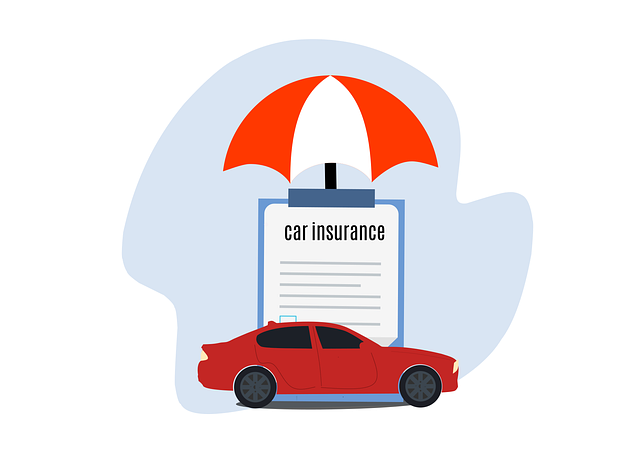Bundling auto and home insurance from a single provider offers significant discounts, streamlined policy management, and comprehensive risk assessment. By combining policies, insurers consider both driving history and home safety, potentially reducing rates for clean records and secure homes. This strategy saves time, money, and hassle while enhancing protection. To bundle, assess existing policies, compare coverage and prices, choose a suitable package, contact your insurer or broker, and review the new plan. Major providers like State Farm, Allstate, and Progressive offer bundled packages, but careful comparison of terms and conditions is essential to secure optimal savings and tailored coverage.
“Discover the power of Bundling Auto and Home Insurance for Discounts in this comprehensive guide. We explore the benefits, mechanics, and strategies behind this popular financial move. From Understanding Insurance Bundling to Top Reasons Why You Should Consider It, this article offers insights for savvy consumers. Learn about leading insurance companies offering bundled packages and how to Maximize Savings. Uncover potential drawbacks and real-life success stories, as we demystify the process, empowering you to make an informed decision.”
Understanding Insurance Bundling: A Comprehensive Overview

Insurance bundling, a strategy that combines multiple insurance policies under one provider, offers significant advantages to policyholders. By bundling auto and home insurance, for example, individuals can secure substantial discounts on their overall coverage. This approach leverages the shared risks between these two types of insurance, leading to lower premiums.
When you bundle auto and home insurance, the insurance company assesses your risk profile holistically. This means they consider both the likelihood of a car accident and potential damages to your home. If you have a clean driving record and maintain a safe home environment, you’ll likely qualify for reduced rates on both policies. Bundling streamlines the policy process, making it easier to manage and potentially saving you time and money in the long run.
The Benefits of Bundling Auto and Home Insurance Policies

Bundling your auto and home insurance policies can offer significant discounts, saving you money on both fronts. When you combine these two essential coverage types with a single provider, they often provide incentives to streamline your coverage needs. This means lower premiums because the insurer views you as a more reliable customer with less risk. It’s a win-win situation where you get comprehensive protection for your vehicle and home at a reduced cost.
In addition to financial benefits, bundling simplifies your insurance management. You only need to deal with one company for both policies, making it easier to review and update your coverage as needed. This convenience can save time and reduce the risk of lapses in critical coverage due to forgetting to renew separate policies.
How Does Insurance Bundling Work? A Step-by-Step Guide

Insurance bundling is a strategy that allows policyholders to combine multiple insurance policies from the same insurer, often saving them money in the process. This practice, especially popular for Bundling Auto and Home Insurance, streamlines coverage while potentially lowering premiums. Here’s a step-by-step guide on how it works:
1. Assess Your Policies: Start by evaluating your existing auto and home insurance policies. Identify if they’re from the same provider; if not, consider switching one or both to the same insurer for bundling benefits.
2. Compare Coverage and Prices: Check that the combined policies offer adequate coverage for both your home and vehicle while meeting your specific needs. Then, compare quotes from different insurers to ensure you’re getting competitive rates on the bundled policies.
3. Choose a Bundling Package: Select a package that offers the best combination of comprehensive coverage and savings. Some companies may have predetermined bundles, while others allow à la carte selections to tailor policies to your preferences.
4. Contact Your Insurer(s): Reach out to your insurance company or broker to initiate the bundling process. Provide them with your existing policy details and any new coverage requirements so they can create a suitable bundled plan.
5. Review and Update: Once the new bundle is in place, carefully review the updated policy documents. Ensure you understand the terms, deductibles, and exclusions of both policies within the bundle.
Top Reasons Why You Should Consider Bundling Your Policies

In today’s digital era, where convenience is at a premium, bundling your auto and home insurance policies has emerged as a game-changer for many. This strategic move offers more than just savings; it simplifies your coverage needs and potentially enhances your overall protection. By combining these essential policies, you gain access to significant discounts that can substantially reduce your annual premiums. Insurers often provide bundled rates because they recognize the value of long-term customer loyalty and the convenience of managing multiple policies under one roof.
Additionally, bundling allows for a more comprehensive evaluation of your risk profile. Since both auto and home insurance consider factors like location, security measures, and driving history, combining them enables insurers to offer tailored coverage. This means you may find better rates and more suitable options compared to purchasing these policies separately. It’s a win-win situation where you get discounted rates and potentially improved coverage for your peace of mind.
Exploring Common Insurance Companies Offering Bundled Packages

Many major insurance companies now offer bundled packages that combine auto and home insurance policies, recognizing the appeal of cost savings for customers who insure both their cars and homes through a single provider. Companies like State Farm, Allstate, and Progressive are prominent in this space, allowing policyholders to potentially save significantly by bundling. These providers often advertise substantial discounts when customers opt for bundled coverage, making it an attractive option for those looking to streamline their insurance needs and lower their overall premiums.
When exploring these bundled packages, consumers should compare not only the discount offered but also the specific terms and conditions associated with each policy. Different insurers may have varying requirements and exclusions, so understanding what’s covered and what’s not is crucial. Additionally, checking customer reviews can shed light on the quality of service and claims handling for both auto and home insurance policies from these companies, ensuring a comprehensive and reliable coverage experience.
Strategies to Maximize Savings on Bundled Auto and Home Insurance

Combining your auto and home insurance policies through bundling can significantly reduce costs, as insurers often offer substantial discounts when you purchase multiple lines from them. To maximize savings on bundled auto and home insurance, start by comparing rates across different providers to identify the most competitive offers. Look for companies that provide both types of coverage and have a strong reputation for customer service.
Next, consider the specific needs of your property and vehicles. Evaluate your home’s security features, such as alarms or fire detectors, as these can lead to lower premiums. For auto insurance, review your driving record and history, as safe driving habits can result in substantial discounts. Additionally, bundle only when it makes financial sense; if the savings are minimal or if you have separate policies with already competitive rates, it might be better to keep them separate for optimal coverage and flexibility.
Potential Drawbacks and Considerations Before Bundling

While bundling auto and home insurance for discounts can seem like a great way to save money, it’s important to consider potential drawbacks before making a decision. One key factor is that not all providers offer competitive rates on both types of policies, so comparing individual quotes from different companies might yield better savings. Additionally, bundled policies often lack customization options; if you have unique coverage needs for your home or vehicle, separate policies could provide more flexibility.
Another consideration is the potential impact on claims. Bundling may result in longer wait times or less personalized service during claim processing, as insurance companies streamline processes to handle both types of insurance together. It’s crucial to understand the terms and conditions of the bundled policy, including deductibles, coverage limits, and exclusions, to ensure it aligns with your risk profile and asset protection needs.
Real-Life Success Stories: Customers Share Their Bundling Experiences

Many customers have successfully navigated the waters of insurance bundling, reaping significant discounts along the way. By Bundling Auto and Home Insurance, policyholders have witnessed a noticeable decrease in their annual premiums. One such customer, Sarah from Los Angeles, shares her experience, “I was pleasantly surprised when I saw the reduction in my insurance bills after tying my home and auto policies together. The process was seamless, and the savings were substantial.”
Jim, a resident of New York, echoes these sentiments, “As a busy professional, finding time to shop around for better rates is challenging. Bundling made it easy. Not only did I get discounted rates on both my car and home insurance, but the customer service was excellent. It’s a win-win situation.” These real-life success stories illustrate how insurance bundling can simplify policy management while offering substantial financial benefits.
